Firenze Thursday 10th and Friday 11th February 2022
After a leisurely start; and a stroll to look at the Palazzo Blu, home of the current Keith Haring exhibition . . .
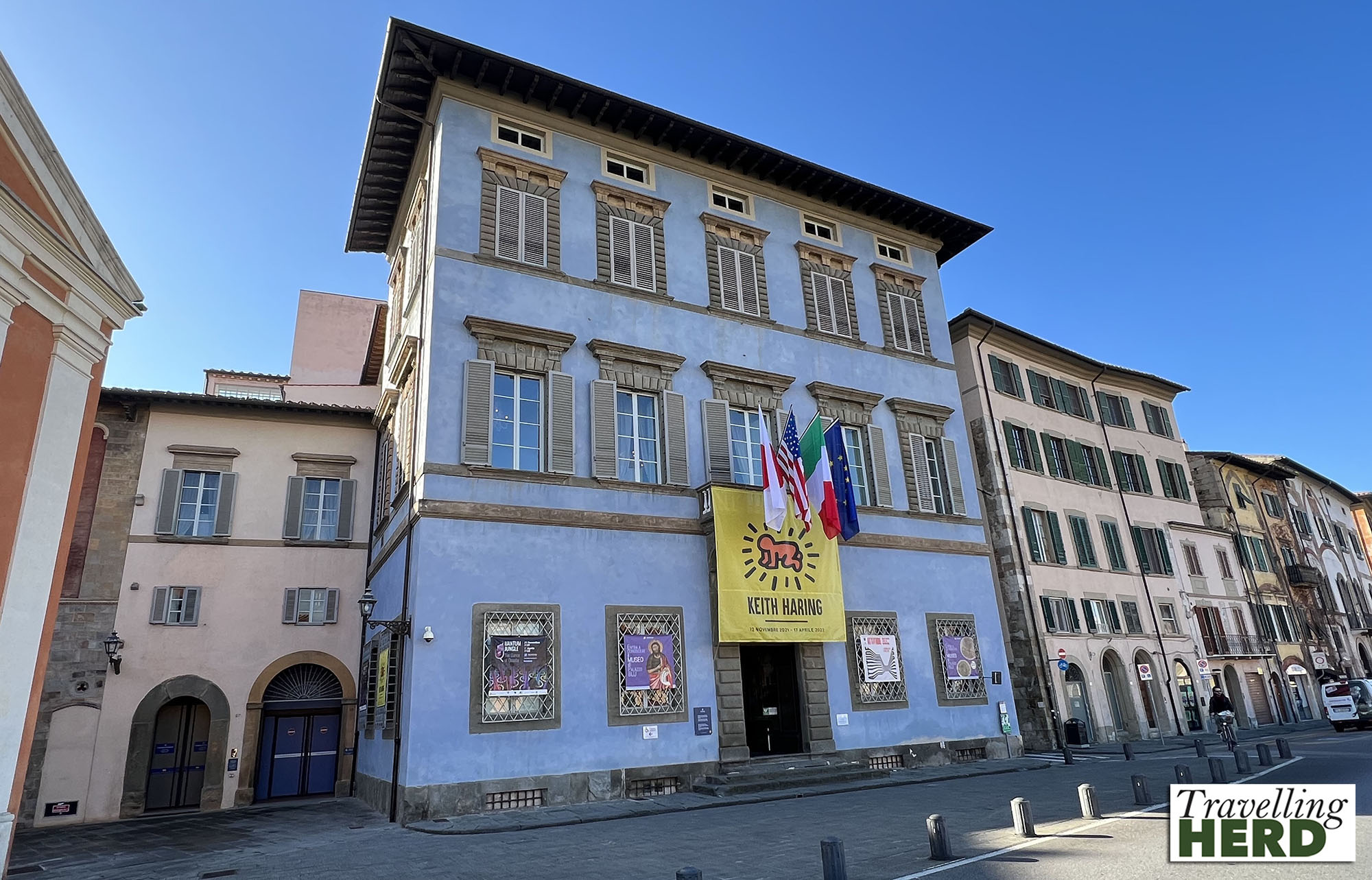
. . . followed by a coffee in the sunshine and a little retail therapy in Pisa we crossed the road from the hotel to the station and we were once again able to catch an earlier train than we had booked. No-one checked our tickets before we boarded or whilst we were on the train. But as there were plenty of available spaces; we had already paid and the seats weren’t reserved we didn’t feel too guilty.
We arrived in Firenze and as we stepped out of the station Robert declared this building to be one of the ugliest he has ever seen. And he has seen a few stations over the years. Designed in 1932 it replaced the original station built in 1848, which we were sure must have been more decorative. Matilda felt it was particularly unfortunate given that Firenze is known as a centre of beautiful Renaissance art and architecture.
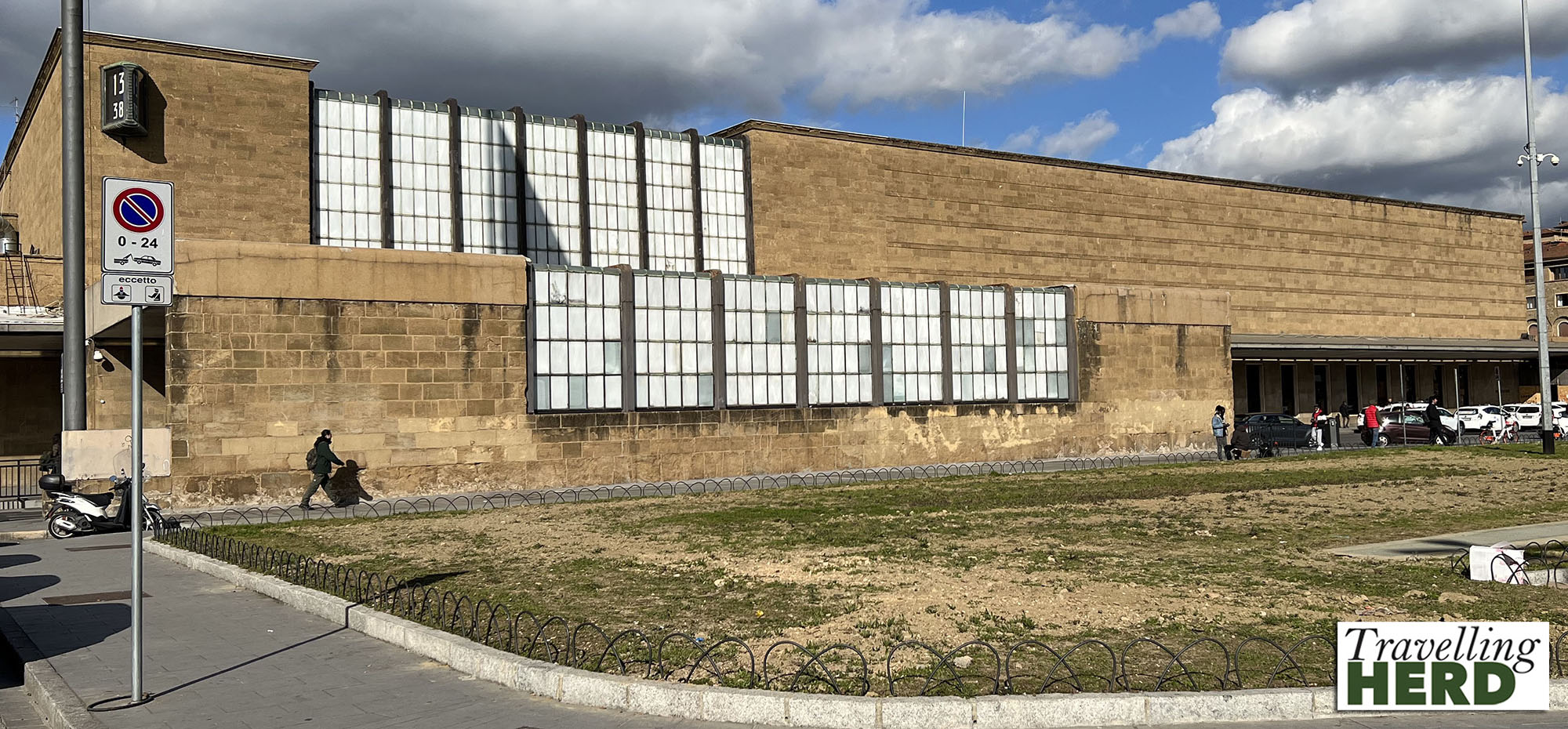
We walked to our hotel right by the Duomo and took the elevator, complete with metal grilles and double doors to reception on the fourth floor. The place exudes historic charm and has a balcony in the breakfast room with views of the cathedral. We have no private balcony of our own but our room has the same view. The thirties fixtures here are considerably more attractive than the station building. We were also warned of one of the hotel’s little eccentricities as there would be no hot water after five in the evening, but as we both prefer to shower in the morning this wasn’t a dealbreaker.
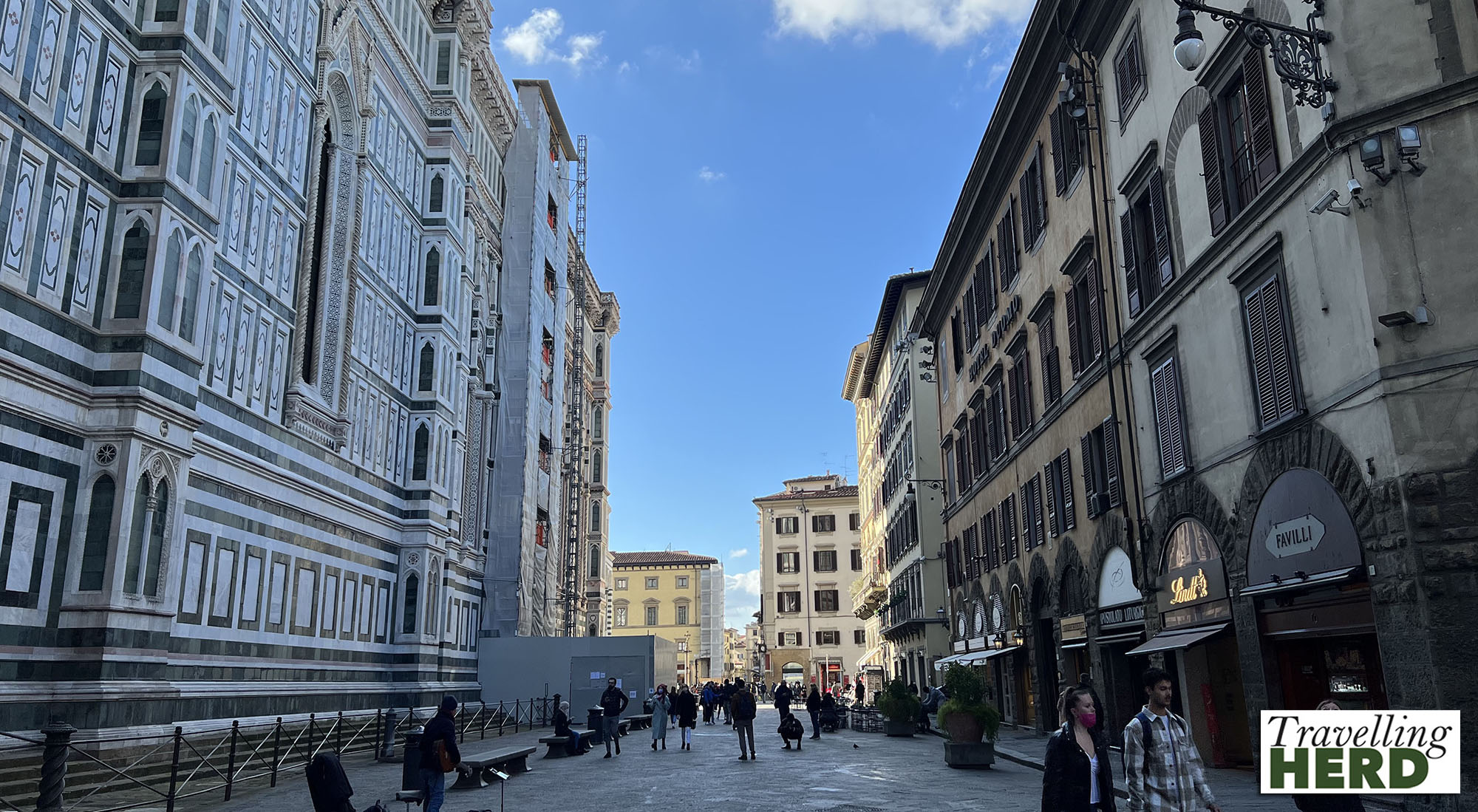
Having arrived early we set off to investigate tickets for the various attractions. Out of season we were able to buy tickets for immediate entry to the Baptistery and book to ascend the dome of the Duomo the following morning.
The octagonal Battistero di San Giovanni manages to be in two places at once as it spans the Piazza del Duomo and the Piazza San Giovanni.
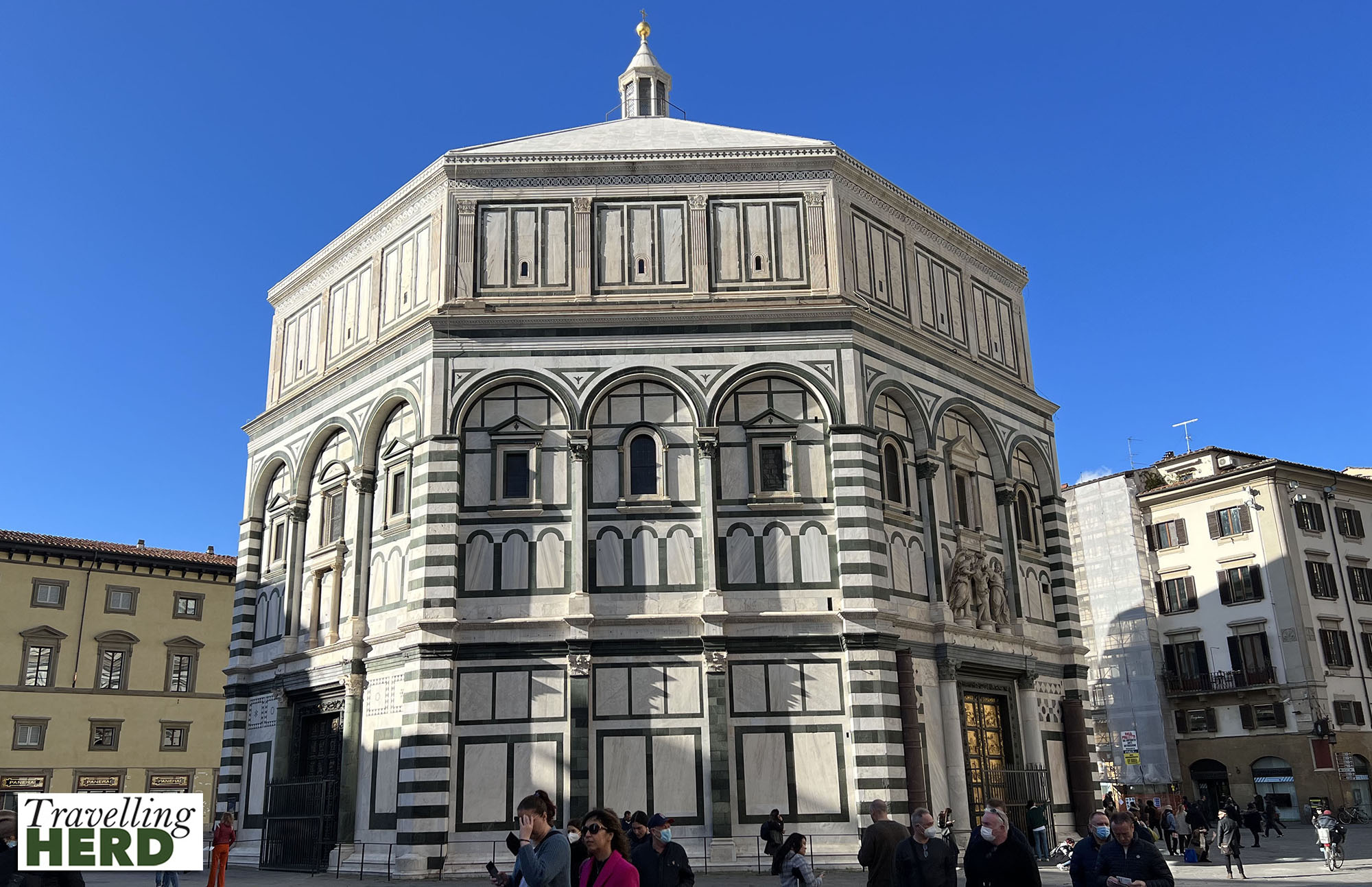
In the early days of the Christian church, baptisteries were attached to a cathedral not a parish church as a bishop would baptize all the would-be Christians in his diocese on three specific holy days in the year.
There are restoration works underway here but the intricate mosaic decorations in the domed ceiling are resplendent.
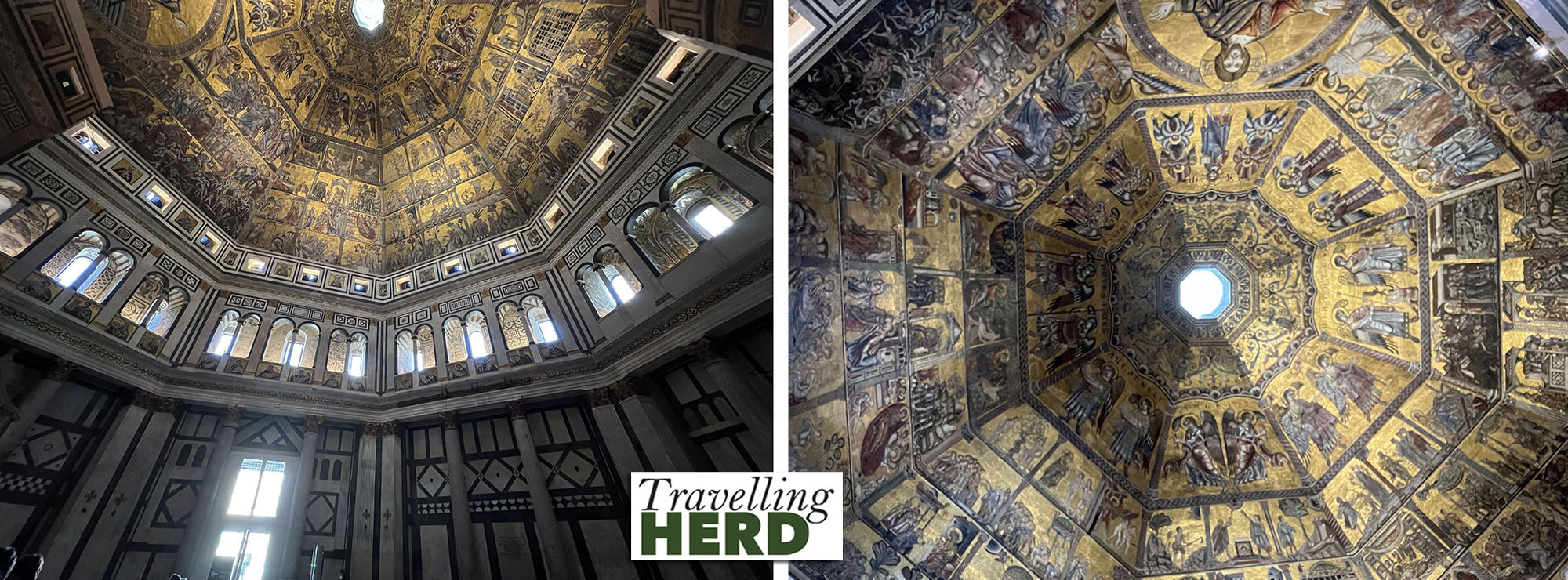
Our ticket also provided us with entry to the Museo dell’Opera del Duomo which we might not have chosen to visit but which the lady who sold us the tickets highly recommended. So we walked back past our hotel and the Duomo itself to see what she was advocating.
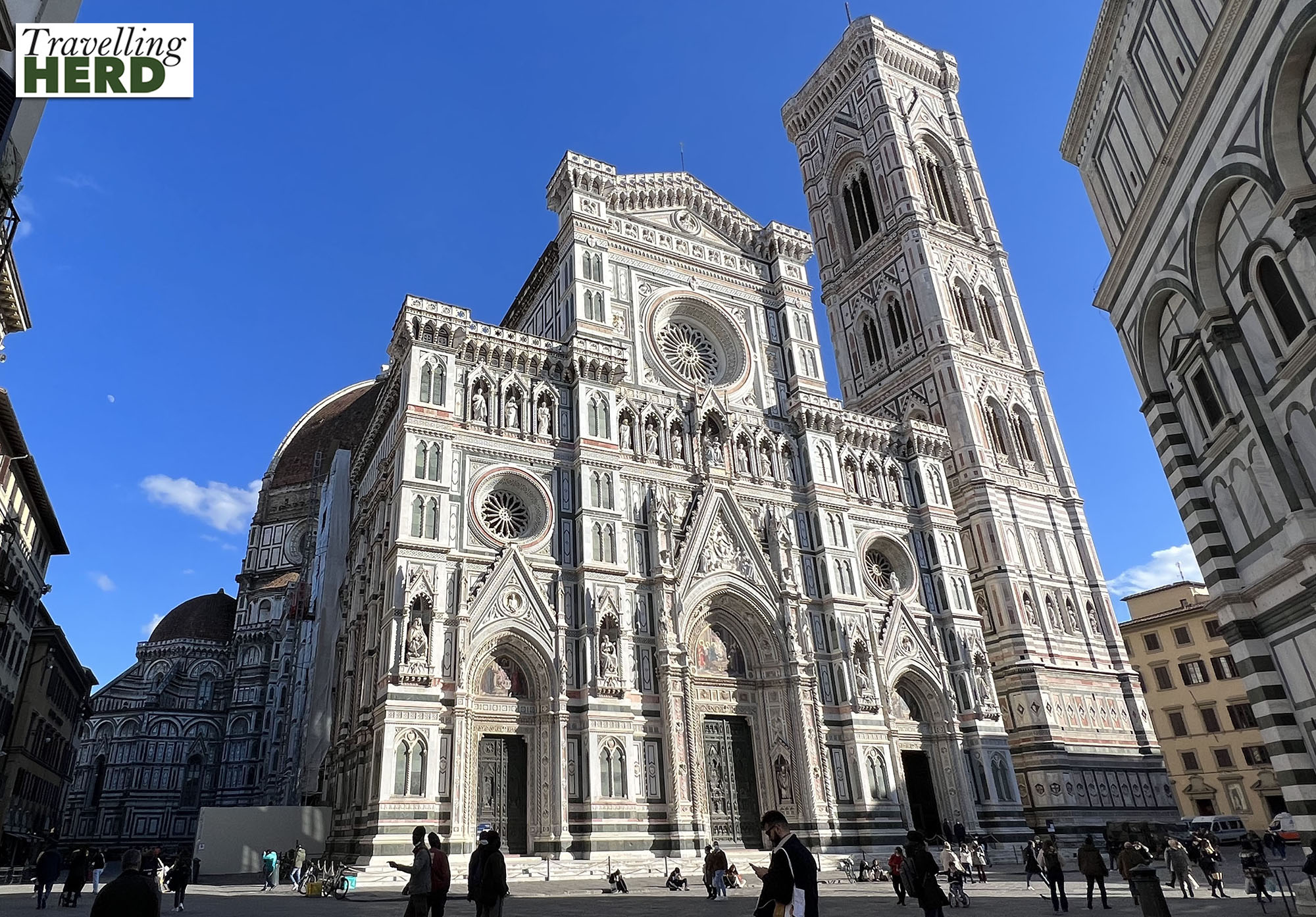
The Cattedrale di Santa Maria del Fiore underwent several redesigns since the first foundation stone was laid in 1293 and many of the most famous and talented architects of their time worked on it over the years including Michelangelo.
We discovered that the Museo dell’Opera del Duomo is on the site of the building where Brunelleschi [more of him later] had an office and where Michelangelo carved his David.
Many of the sculptures from the original, uncompleted facade which was taken down in 1588, have been preserved and placed in their intended positions in a facsimile . . .
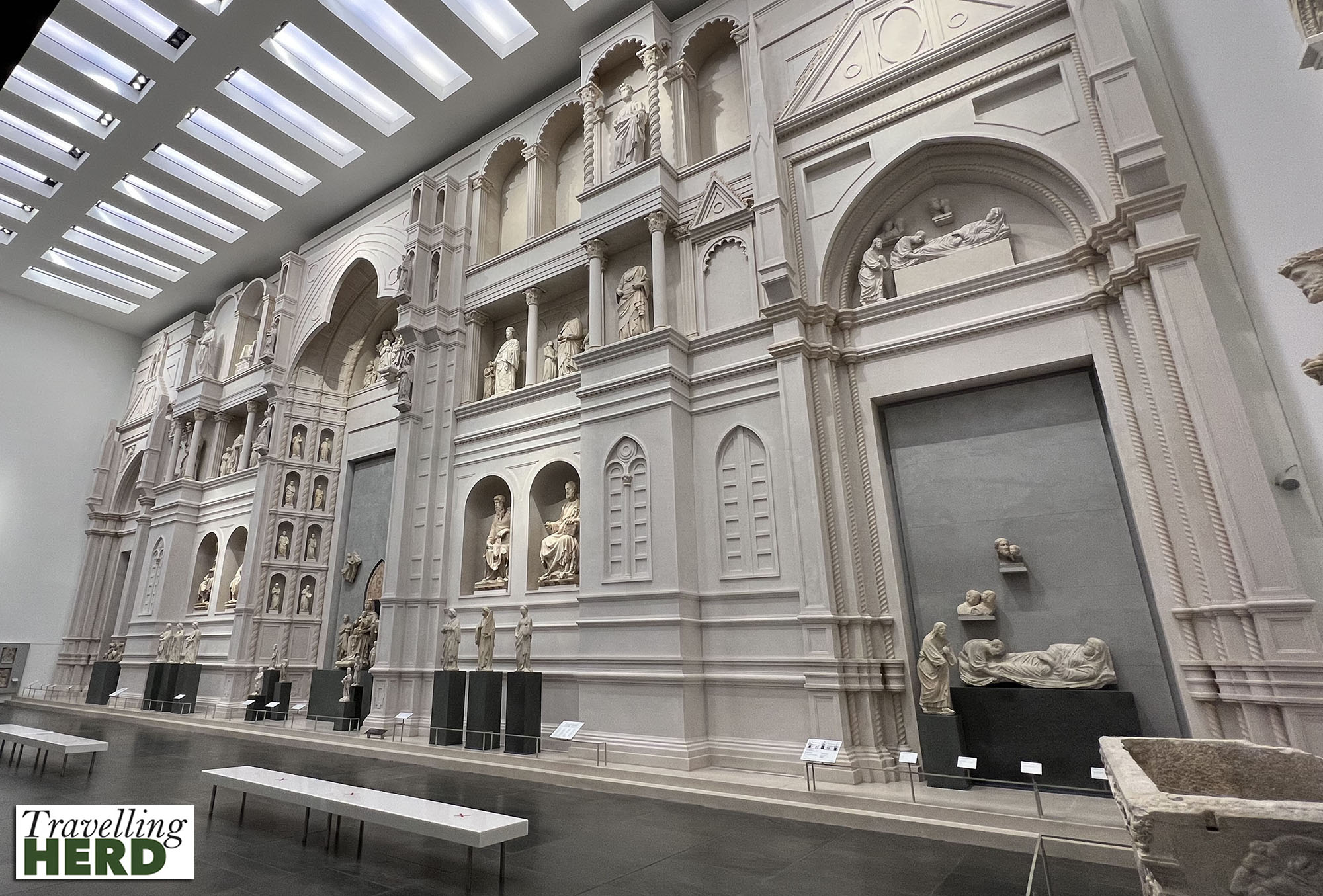
. . . opposite the original doors to the Baptistry with the statue groups above.
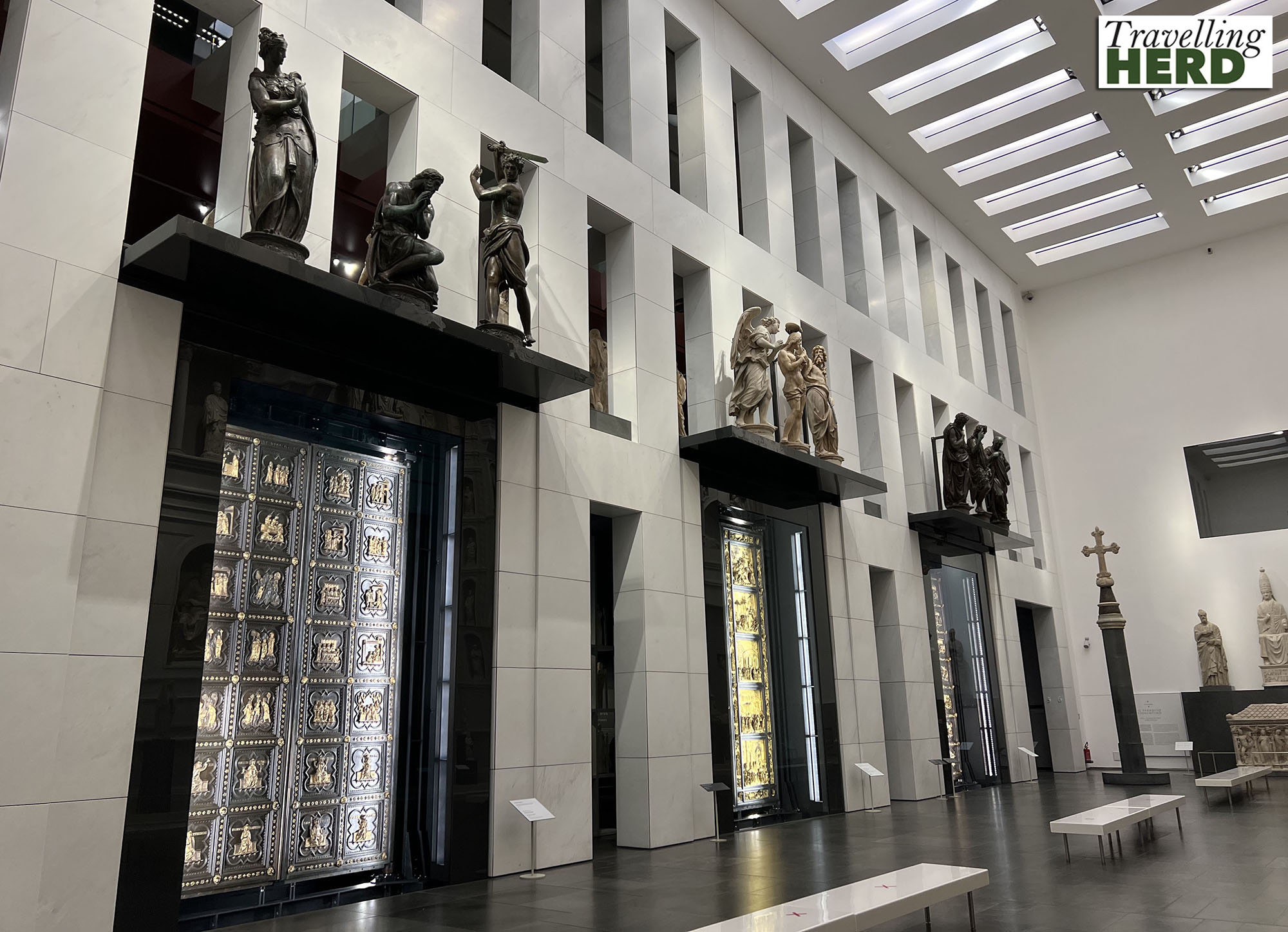
Many other sculptures are on display . . .
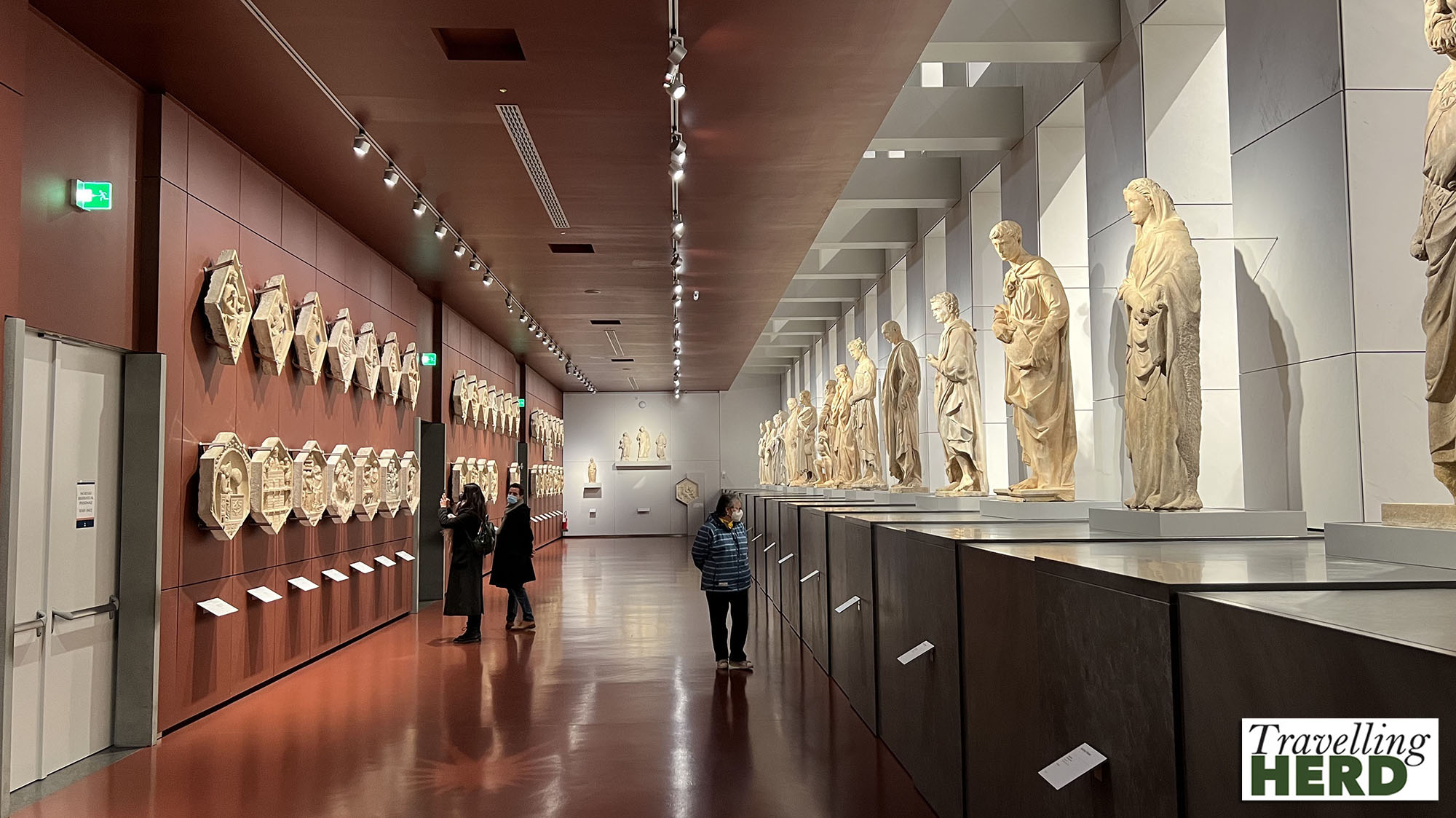
. . . including Michelangelo’s, second from last work but, unfinished Pieta, which it is thought he intended to adorn his own tomb. The hooded figure of Nicodemus is said to be a self portrait of the artist who attempted to destroy the sculpture because he didn’t like the faults in the marble which were revealed as he worked. It was subsequently restored and completed by an apprentice sculptor although Christ’s left leg is still missing.
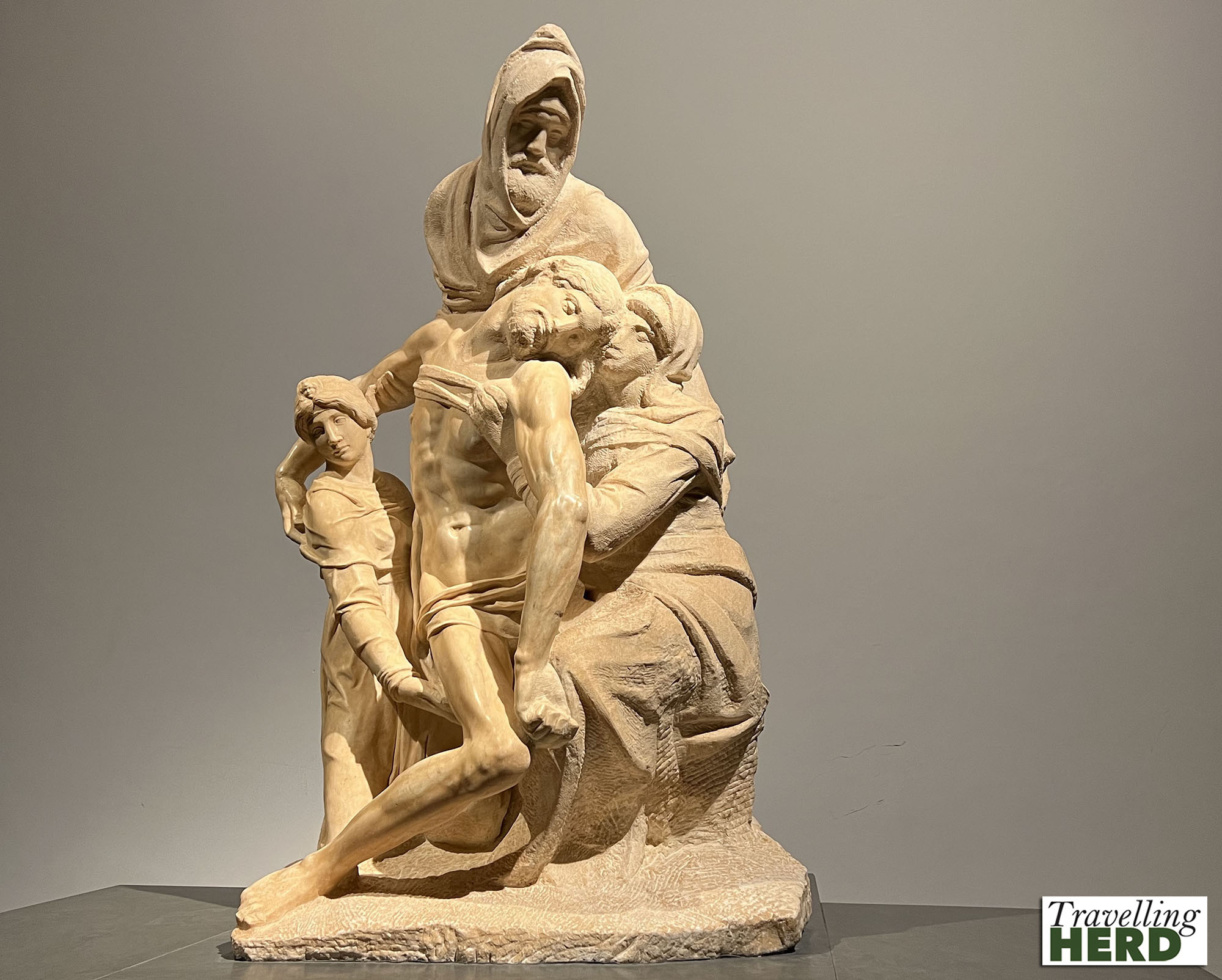
From here we walked across the Piazza della Repubblica and past the Caffè Gilli which Matilda had already identified as her preferred coffee stop for the following day.

And so on to our thirty-third Hard Rock Café in the old Gambrinus Cinema building. Although the restaurant was serving food, the bar has not re-opened post-Covid so we had a drink at a pop-up style bar in the shop.
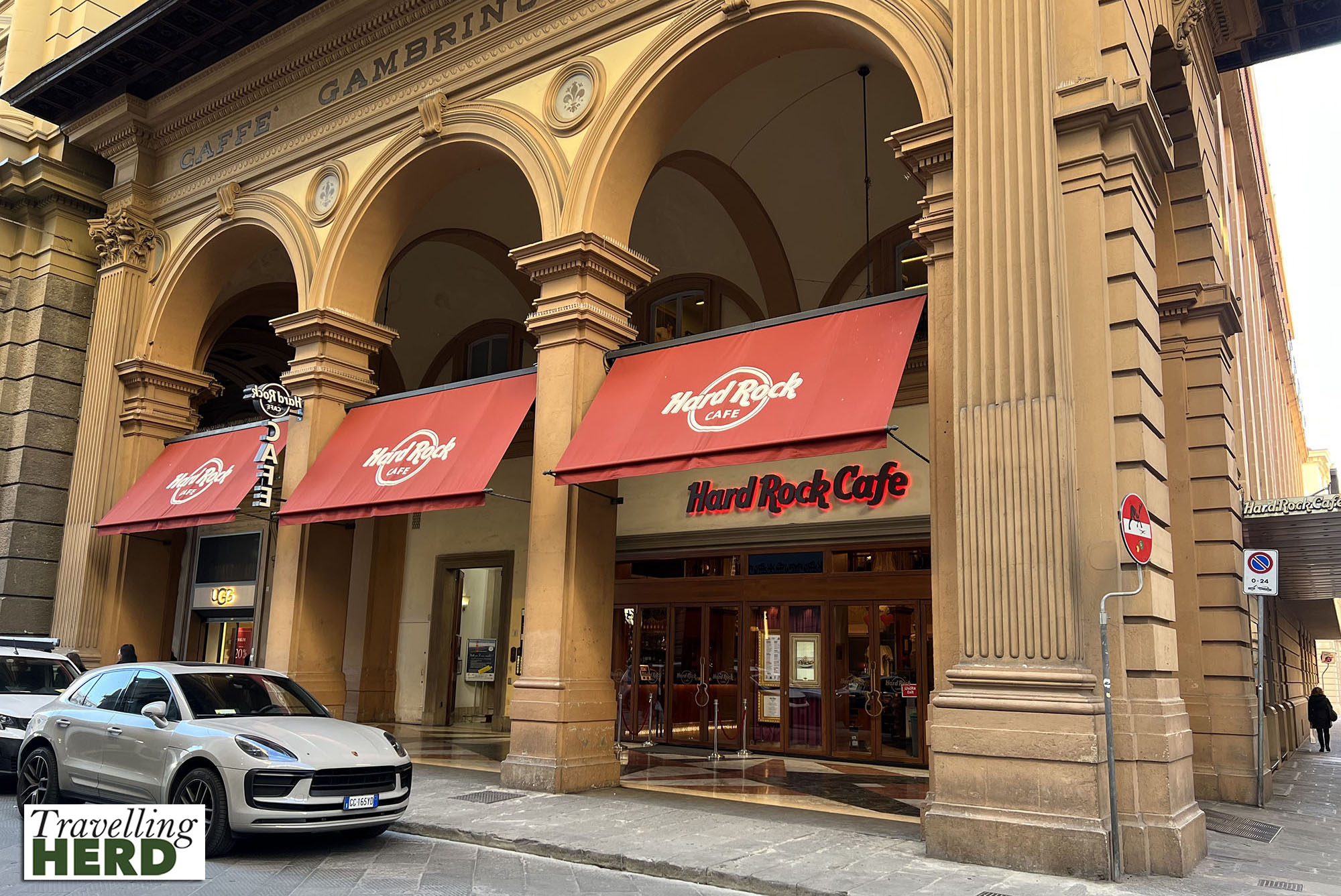
From here we went to Fermento and then . . .
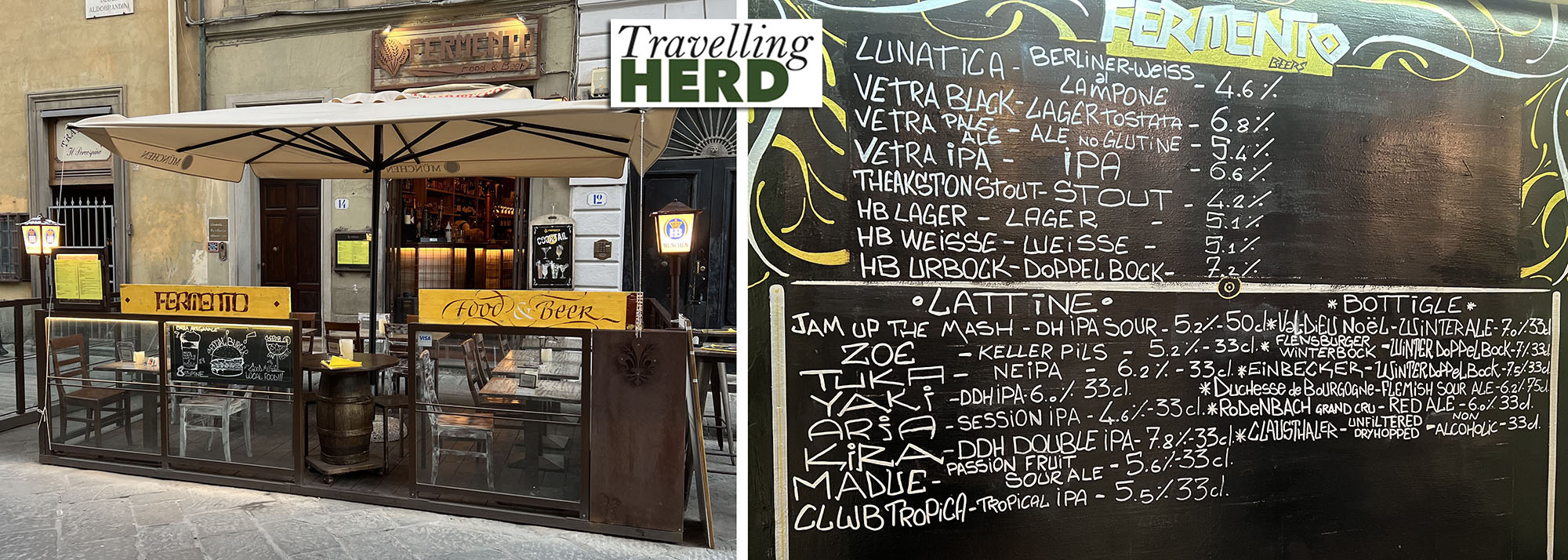
. . . Alibi each with an impressive range of ales on tap.
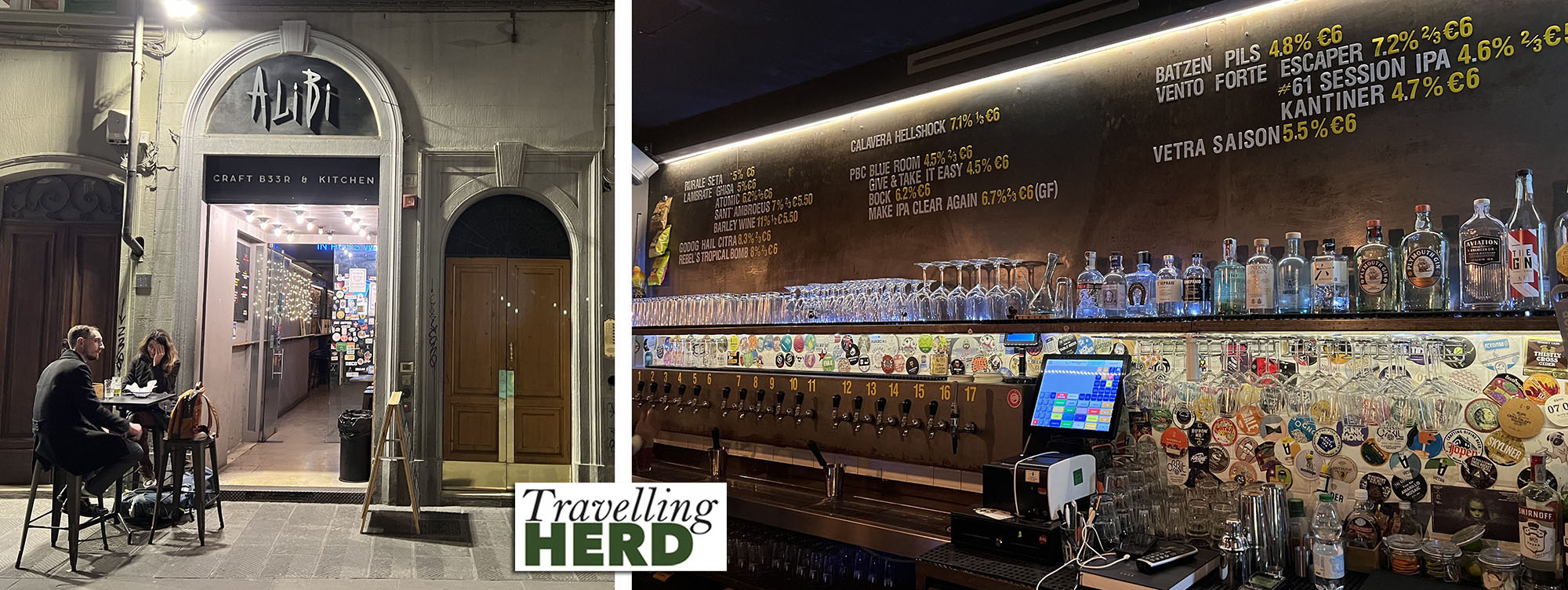
We then walked in search of somewhere to eat and came across the Lorenzo de’ Medici restaurant and pizzeria. It offered a wide range of dishes but also specialised in roasted meat with uncooked sides of meat on display in the window on the left and there were people tucking into huge joints with very few trimmings. Not a place for sensitive vegetarians. Robert had La Padellaccia do Lorenzo (seafood, mussels and prawns) which was essentially a medley of fish cooked in sauce and served in the pan, similar to moules marinère. Apparently this is a local speciality and was pronounced to be the ‘Dish of the day’.
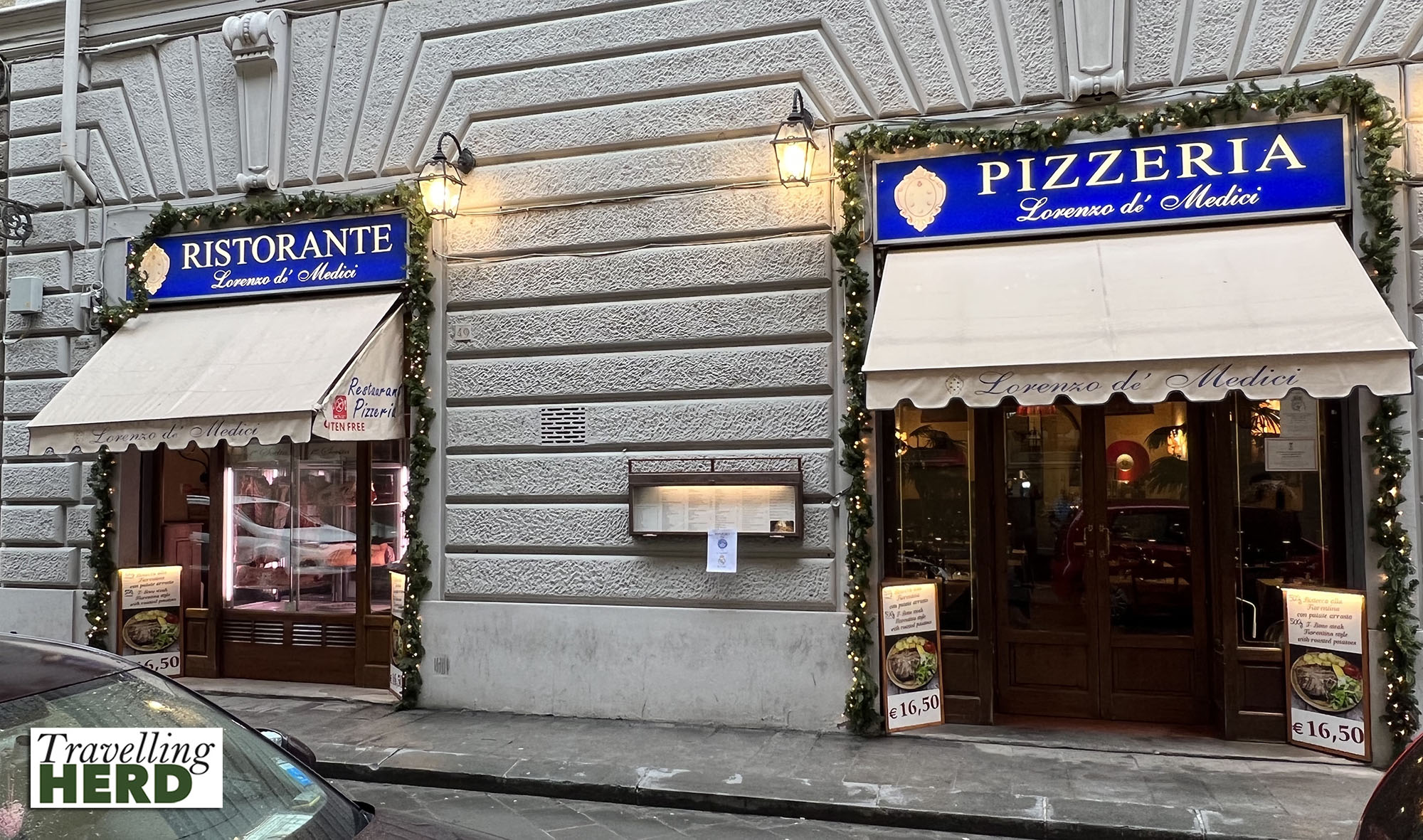
The next morning we had booked to climb to the top of the dome at 10:30am and were told to be there 10 minutes early. Matilda wanted time to digest at least some of her breakfast beforehand so we went for a stroll past the Palazzo Vecchio, on the Piazza della Signoria, which has served various purposes over time but is now Firenze’s Town Hall.
Outside stands a replica of Michelangelo’s David: Matilda seemed to be far more interested in the perfect male form than Robert.
The sculpture was originally intended to adorn the roof at the east end of the cathedral but it became clear that it would be impossible to raise the six ton statue to the roof and instead it was placed in the Piazza della Signoria. Even so it took four days to move the statue the half mile from the workshop. It was subsequently moved in 1873 to the Galleria Dell’Accademia to preserve it from the elements and in 1910 a fibreglass replica was erected in its original position on the square.
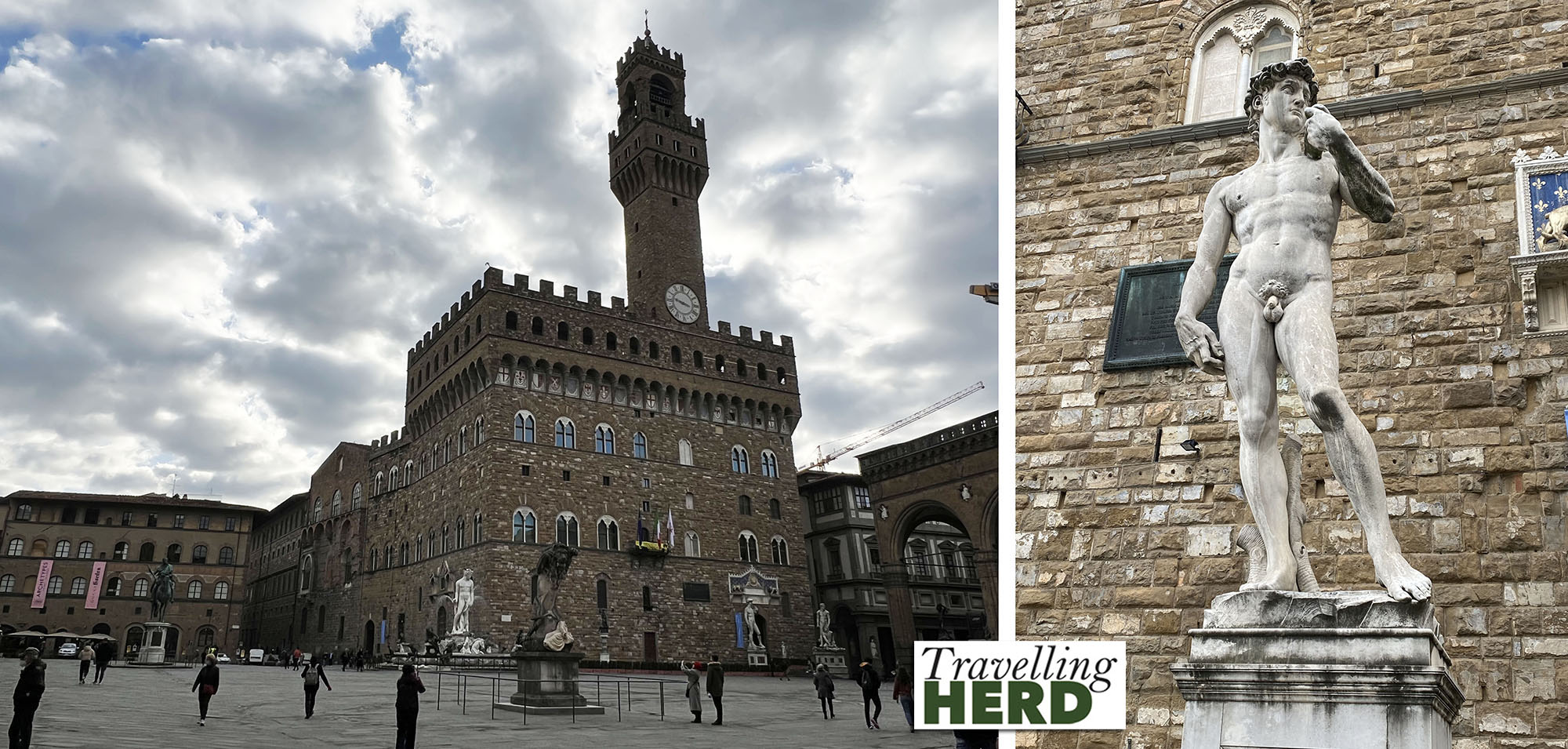
From here we walked on to the Ponte Vecchio, the famous medieval stone bridge [which incidentally, is the only thing about Firenze that Robert can remember from his previous visit here 39 years ago, when he was interrailing]. As you approach along the River Arno, the structure looks rather piecemeal as though the shops have been added as an afterthought and a little precariously at that.
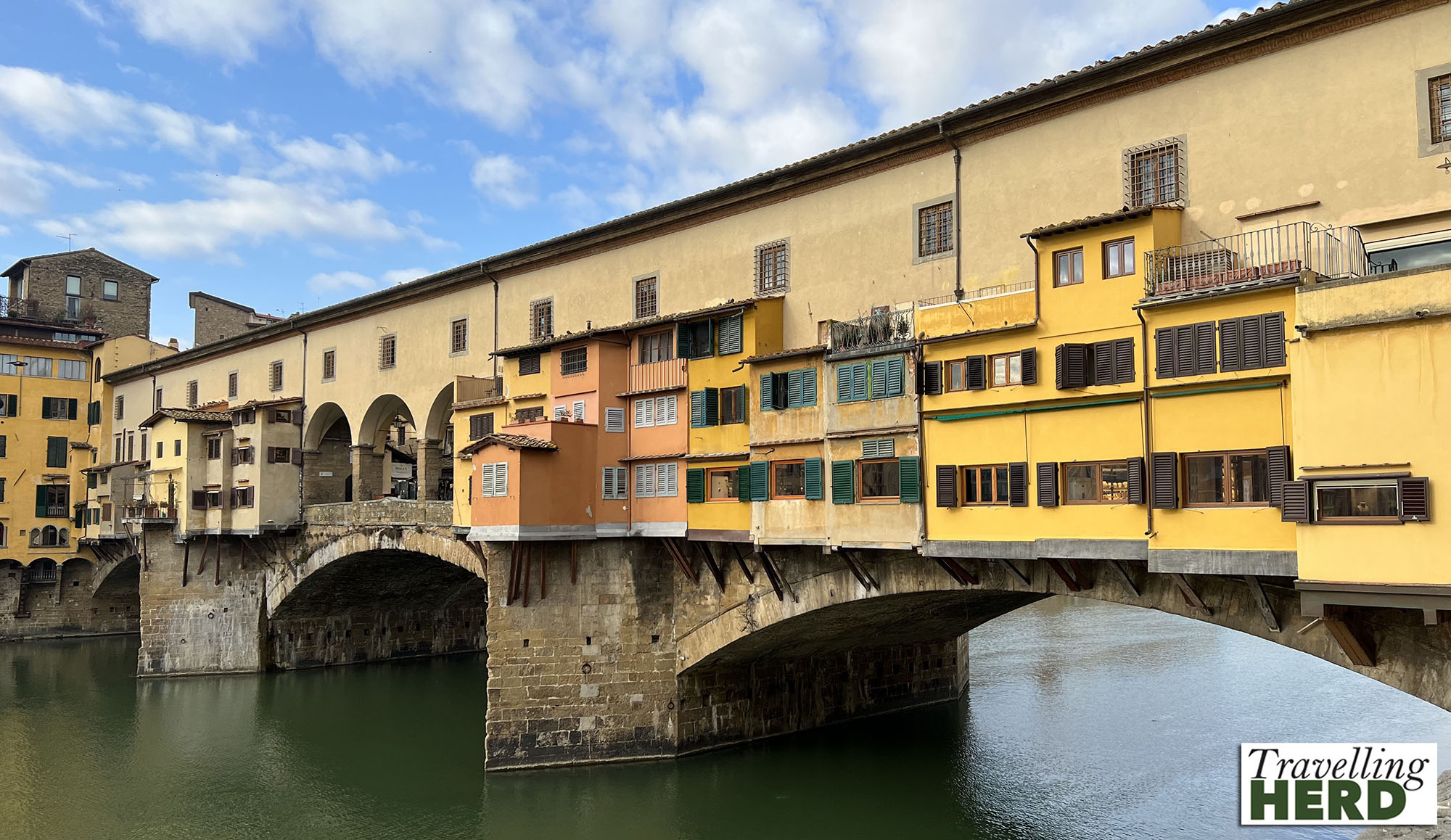
As we passed by, the jewellery shops were mostly just opening up but looking through the ones which had their shutters lifted you could see the view to the river beyond.
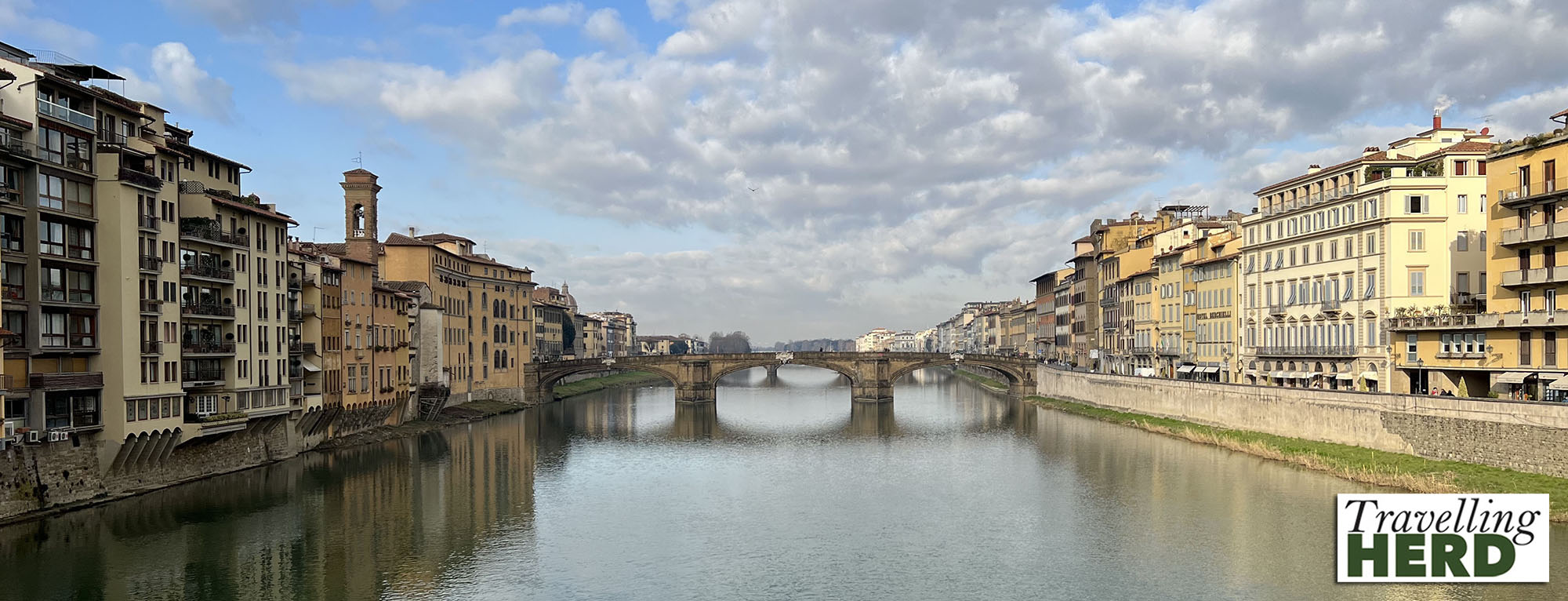
On our way back we passed by the Mercato Nuovo and the bronze fountain known as Il Porcellino [the Piglet]. Matilda fondly rubbed the boars’ nose to ensure she will return to Firenze,
It was only after Matilda had done this and Robert had squirted her with some hand sanitiser that she realised this was a pointless exercise as our itinerary means we will be returning to Florence in four days time.
The piglet’s nose, like Juliet’s breast in Verona, is nicely polished compared to the rest of the statue.
Apparently, putting a coin in the statue’s mouth and letting it fall through the grating ensures good luck. This seems to be a new tradition, as Matilda doesn’t remember it from her last visit and it is possibly designed to generate income for whoever empties the grate.

We then queued for a short while for the Dome. We had been told when we bought the tickets that it was 400 steps to the top whilst Robert counted 457, though he felt he may have missed a few. Elsewhere we saw 463 steps quoted. Regardless of the exact number, it was a long way up and Matilda [and she suspected others in the group were] was grateful for the chance to catch her breath when part way up there is a brief respite as you walk around the inside of the dome to look down into the cathedral . . .

. . . and admire the frescos on the octagonal ceiling which depict The Last Judgement. Brunelleschi, a technical and mathematical genius, won a competition to complete the dome and used over four million bricks in an intricate herringbone pattern to create the largest brick dome ever constructed.

The views, like the climb, were breath-taking.

The walk back down the steep and narrow stairs was also an experience. We thought when we descended we would be able to look around the cathedral but unfortunately we were channelled straight out and the queue at 11 o’clock was already lengthy. We will save this for our return visit as guaranteed by Il Porcellino.
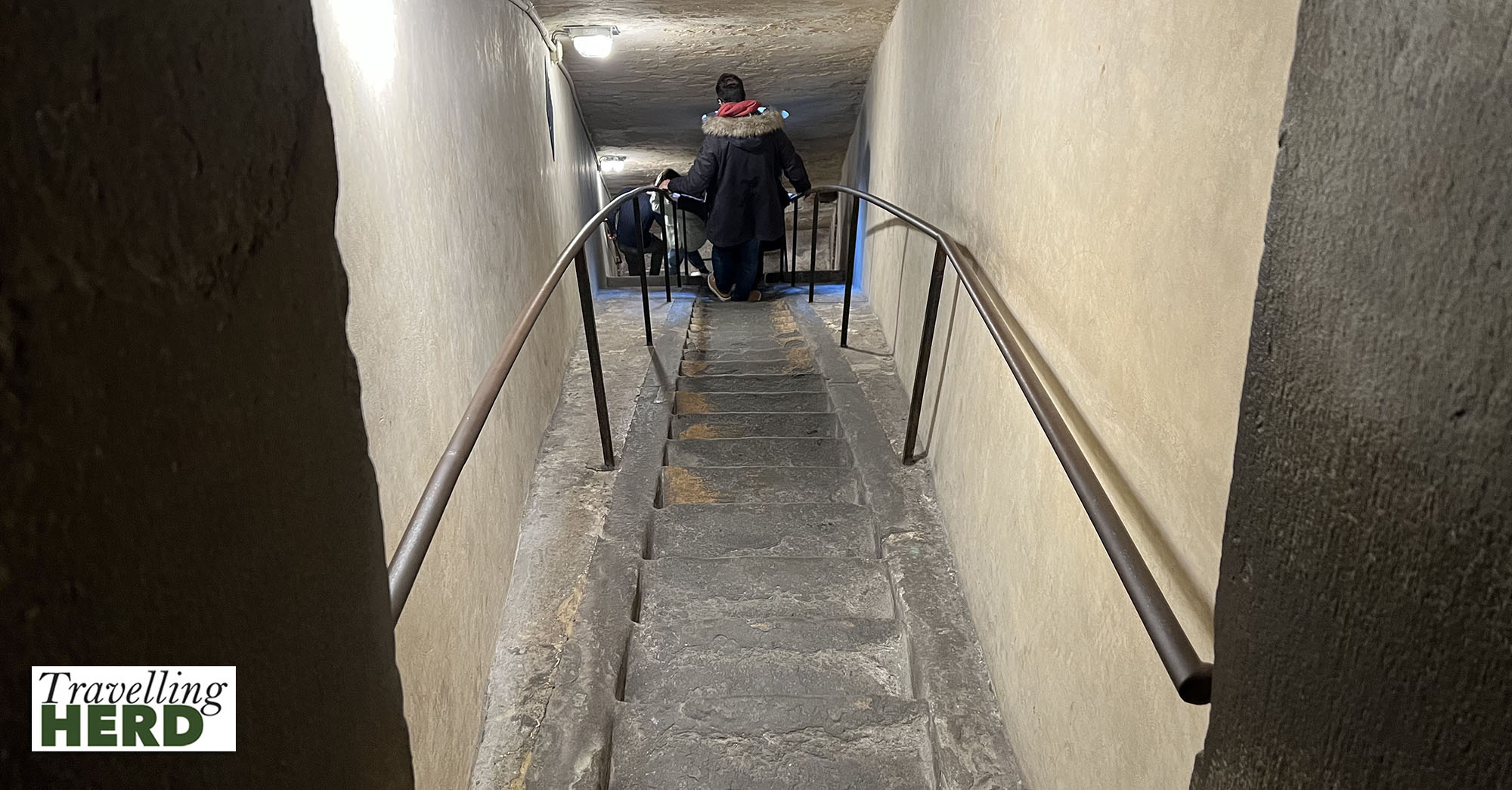
Instead we went to the Basilico di San Lorenzo, the parish church of the Medici Family. The almost unfinished exterior contrasts with the stylish Corinthian arcades within.
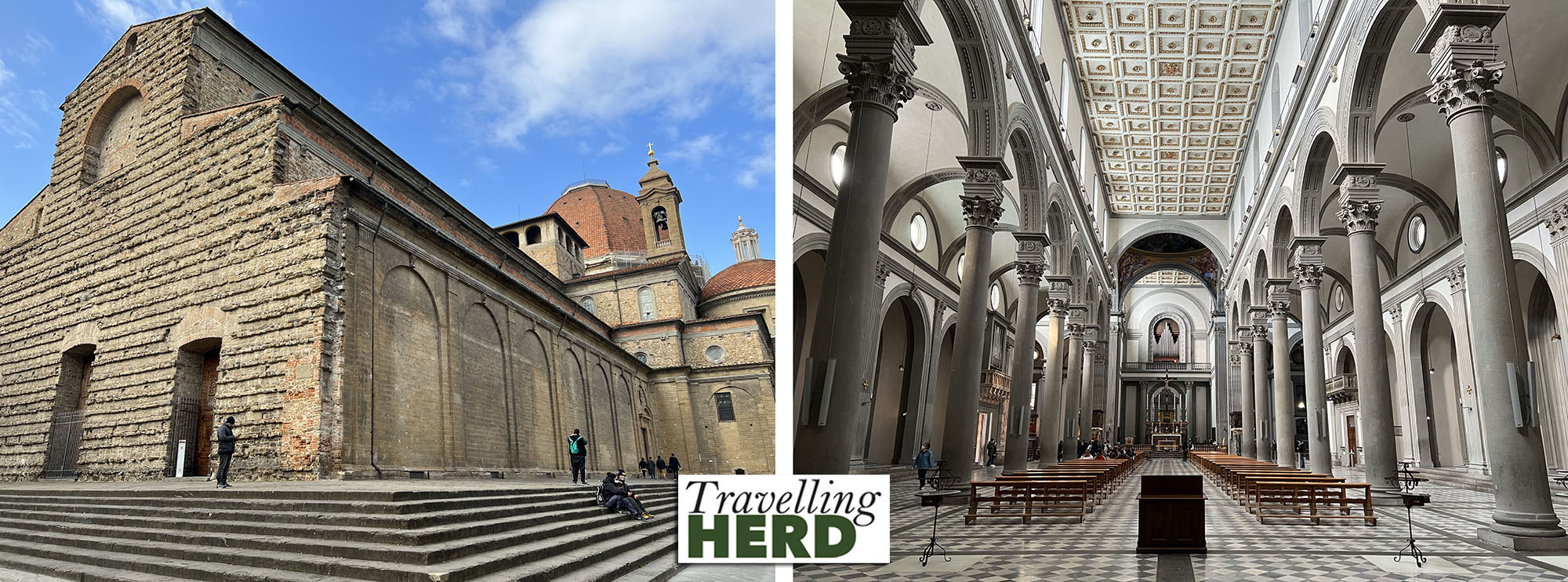
We dropped in to the Mercato Centrale and if we had been cooking for ourselves we would definitely have been tempted by the array of fresh foods available.
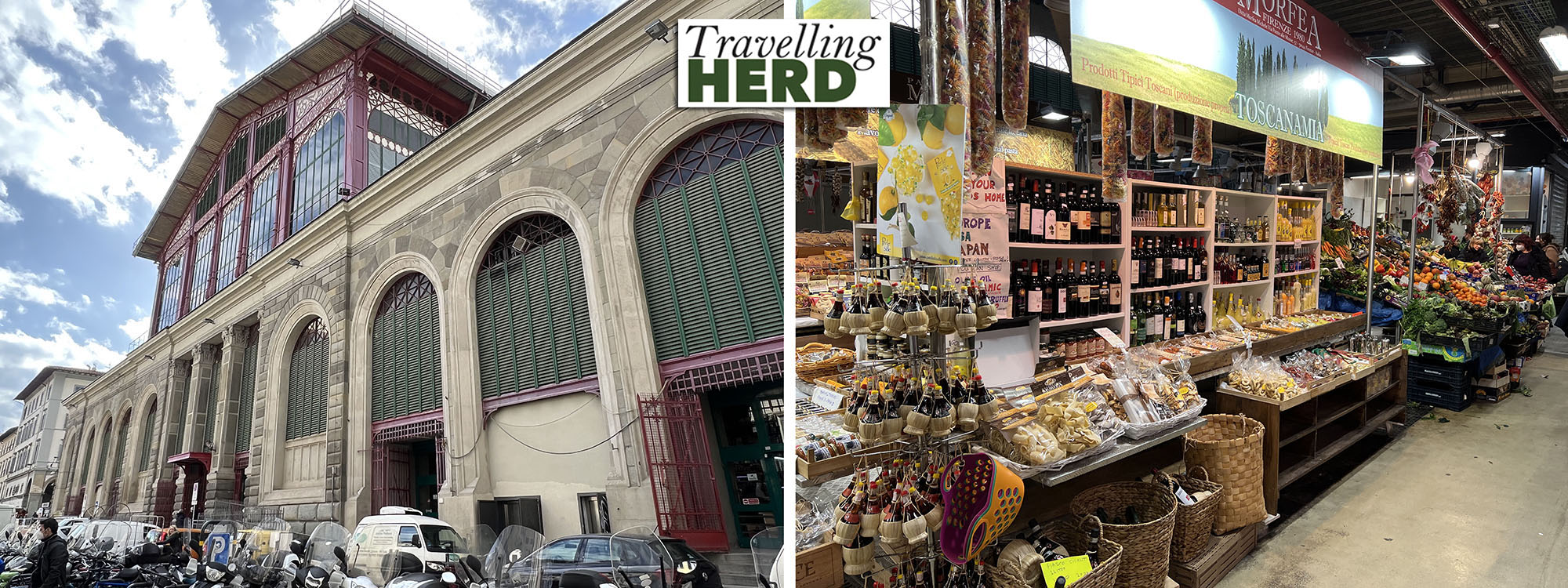
It was now time to rest our feet and sit down for some refreshments and the Caffè Gilli did not disappoint. Matilda declared the four finger pastries which she ordered with her coffee to be delicious little mouthfuls of perfection whilst Robert received some unexpected and delicate snacks with his beer.
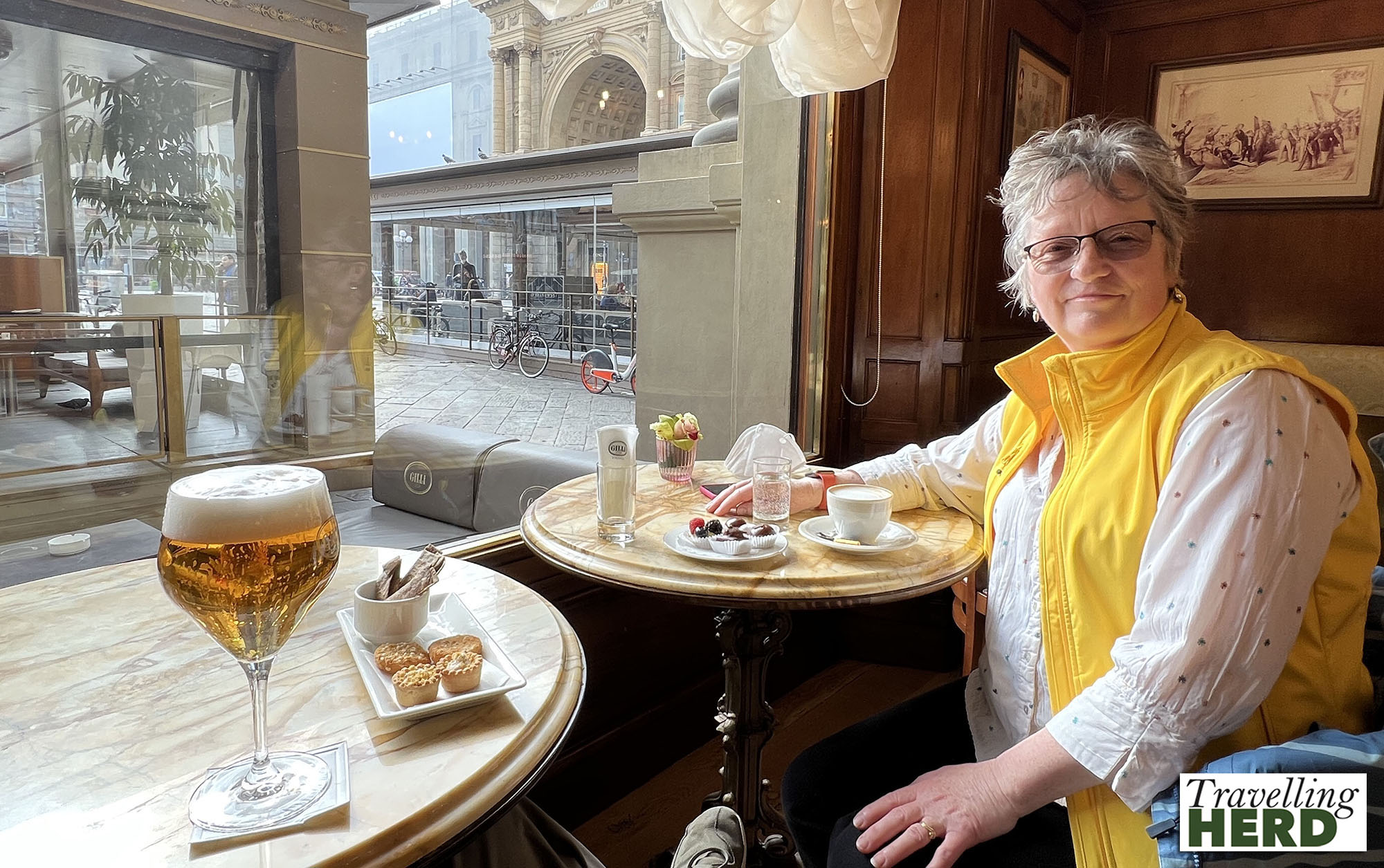
Rejuvenated by our refreshments, we visited the Basilica di Santa Croce, or Church of the Holy Cross, which is also known as the Temple of the Italian Glories (Tempio dell’Itale Glorie) as many illustrious Italians are buried here including . . .
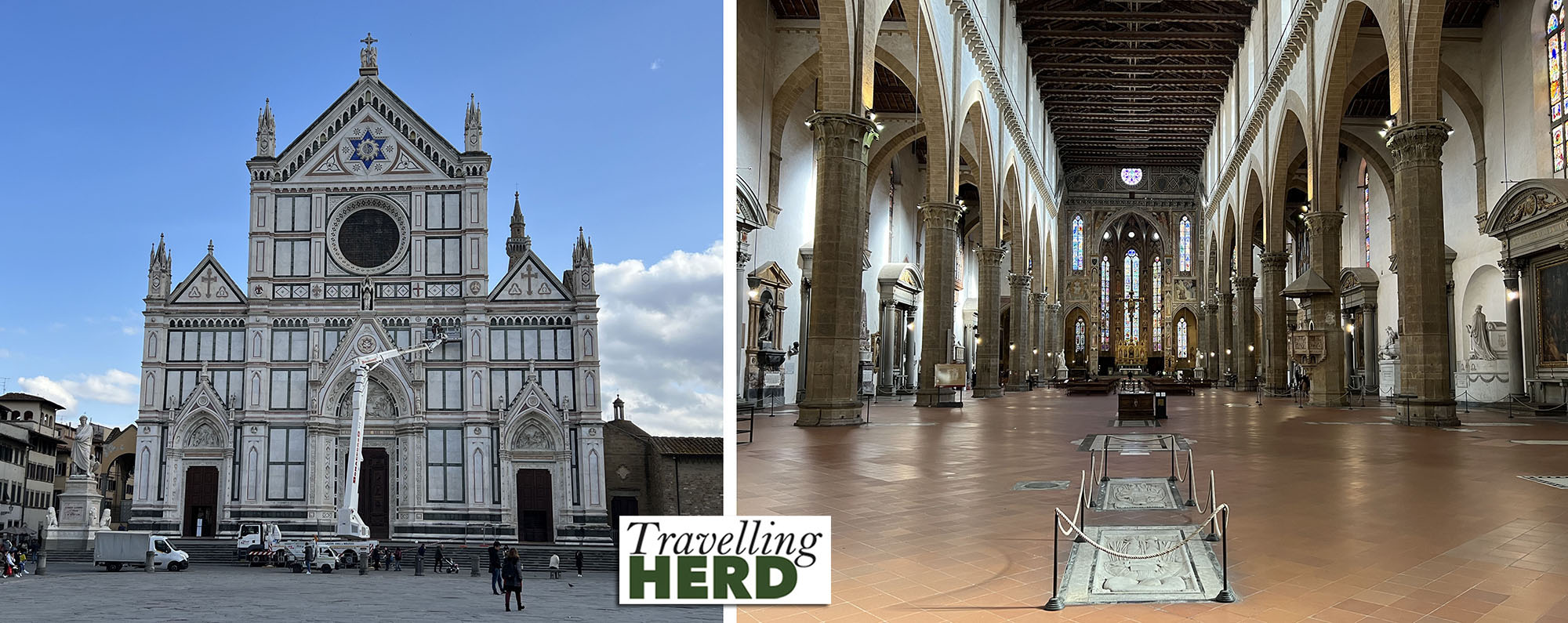
. . . in the three memorials from left to right below Michelangelo, Machiavelli and Galileo.
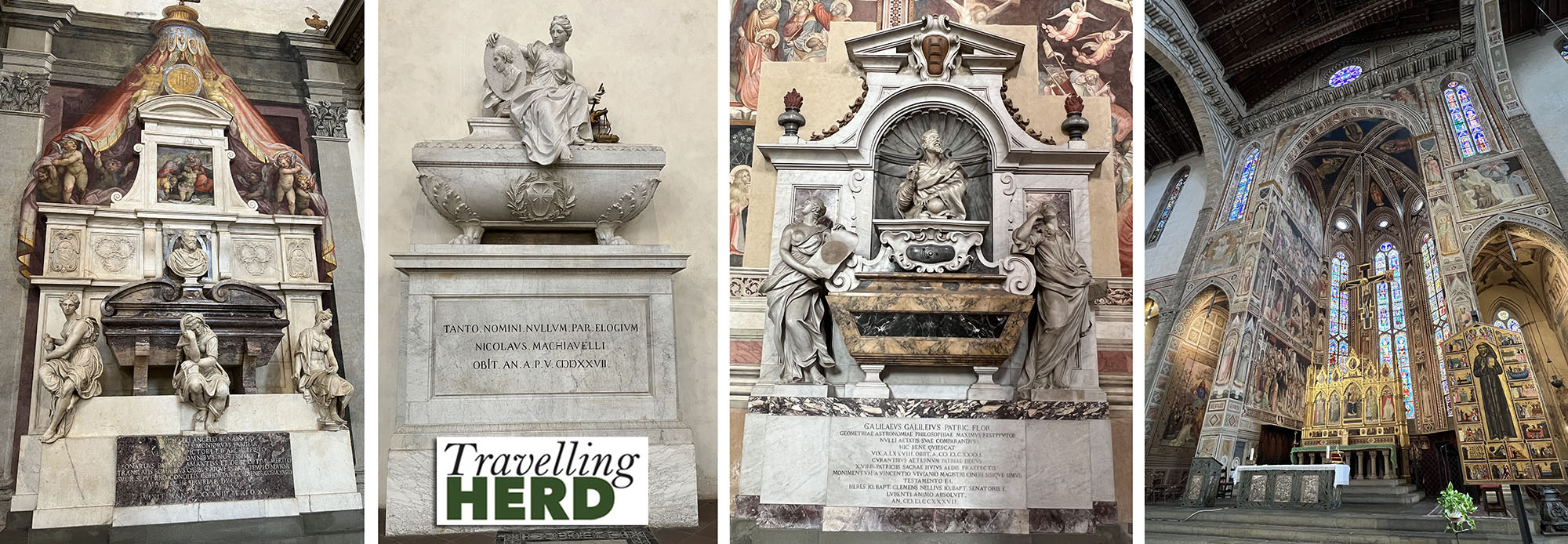
When it was built, a convent lay to the south of the church. Some of the buildings survive, including the main cloister which is quiet and sheltered.
The Cappella dei Pazzi, one of Brunelleschi projects, adjoins the cloister. When we visited, the lighting was dimmed and Dante’s drawings of the Divine Comedy were being projected onto the walls and ceiling [see ‘Video of the day’]. As the Chapel is considered to be a masterpiece of architectural proportions and formal elegance Matilda would have preferred to be able to see the building itself.
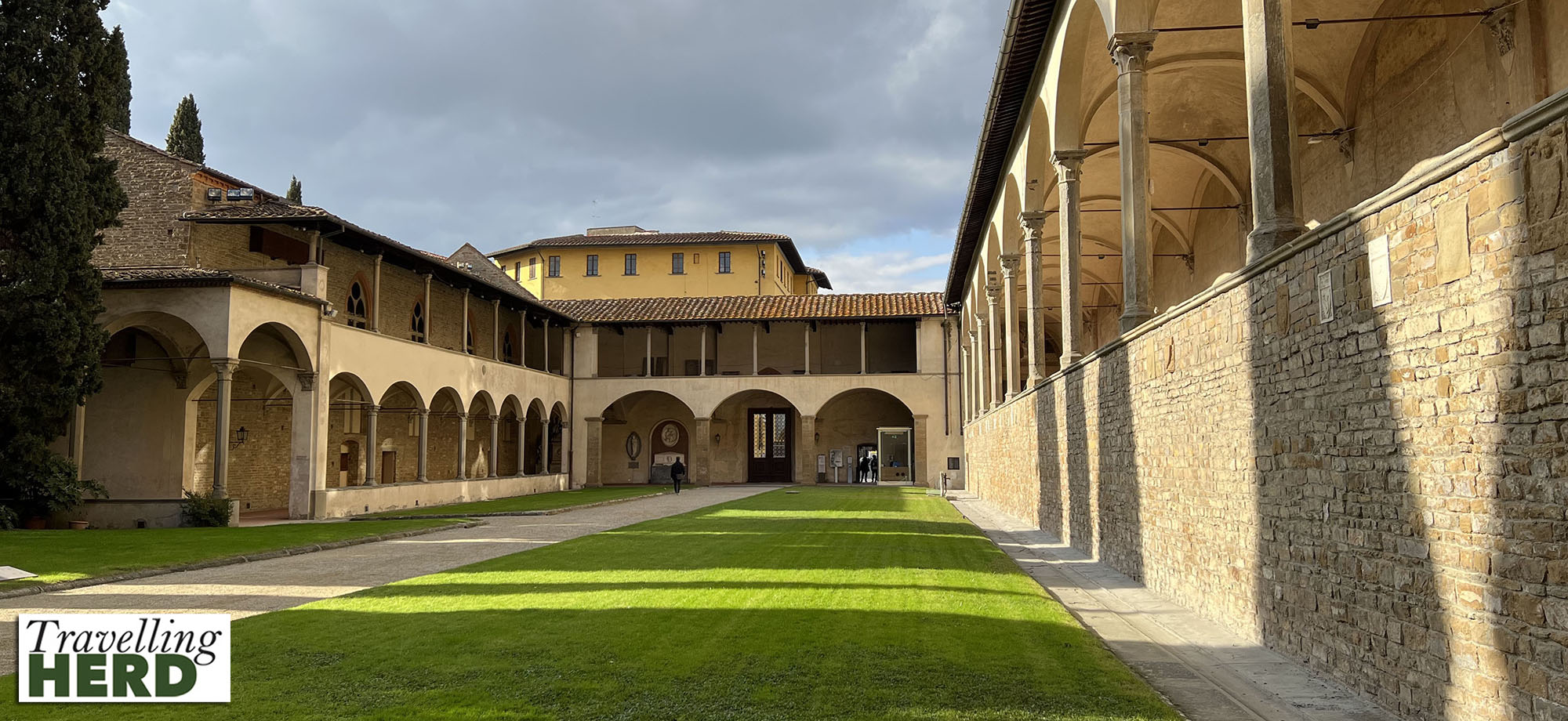
The old Refectory was built early in the fourteenth century when the Franciscan community in residence in Santa Croce numbered roughly one hundred and fifty friars. It was turned into a storehouse in the early 19th century and in 1900 it was restored for use as an exhibition hall to display works of art.
The site was originally in marshland and the church has been flooded several times including in 1966 when the waters rose five meters, completely immersing Giorgio Vasari’s The Last Supper, now restored. A marker, in the left of the photo below right shows how high the water came. Stepping outside, you realise that most of the cloisters would all have been submerged. The painting now has a winching mechanism that automatically raises it, should it flood again.
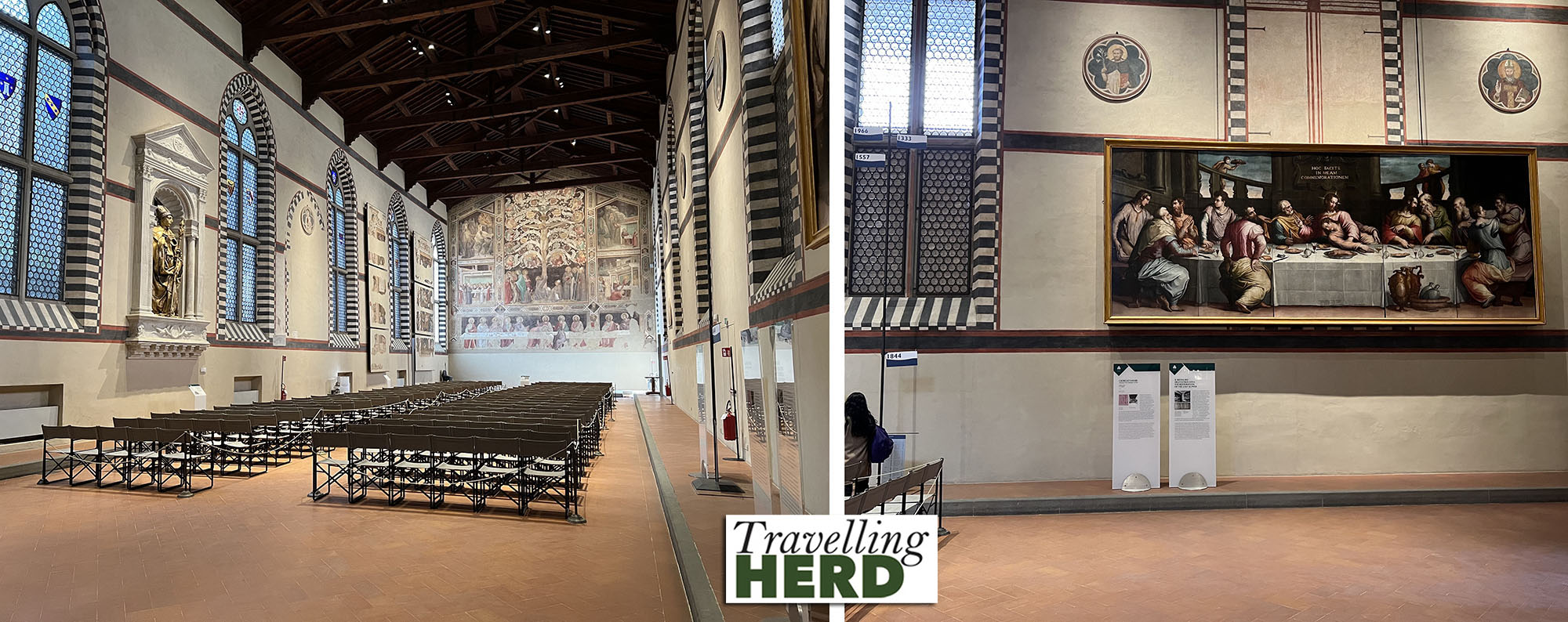
Route Map:

Video of the day:
Selfie of the day:

Dish of the day:






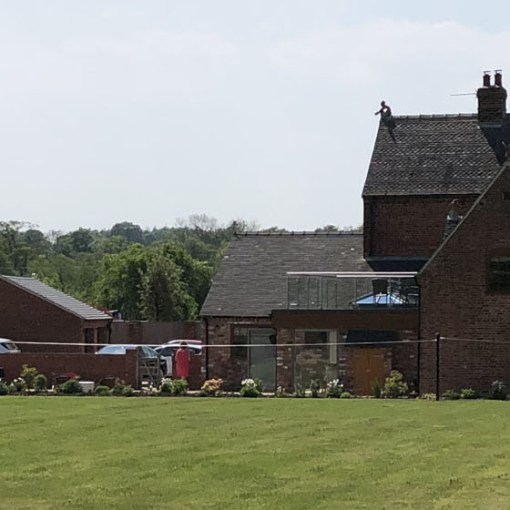
One thought on “Return to Firenze”
Fascinating blog – almost feel we are with you – line the look of dish of the day !